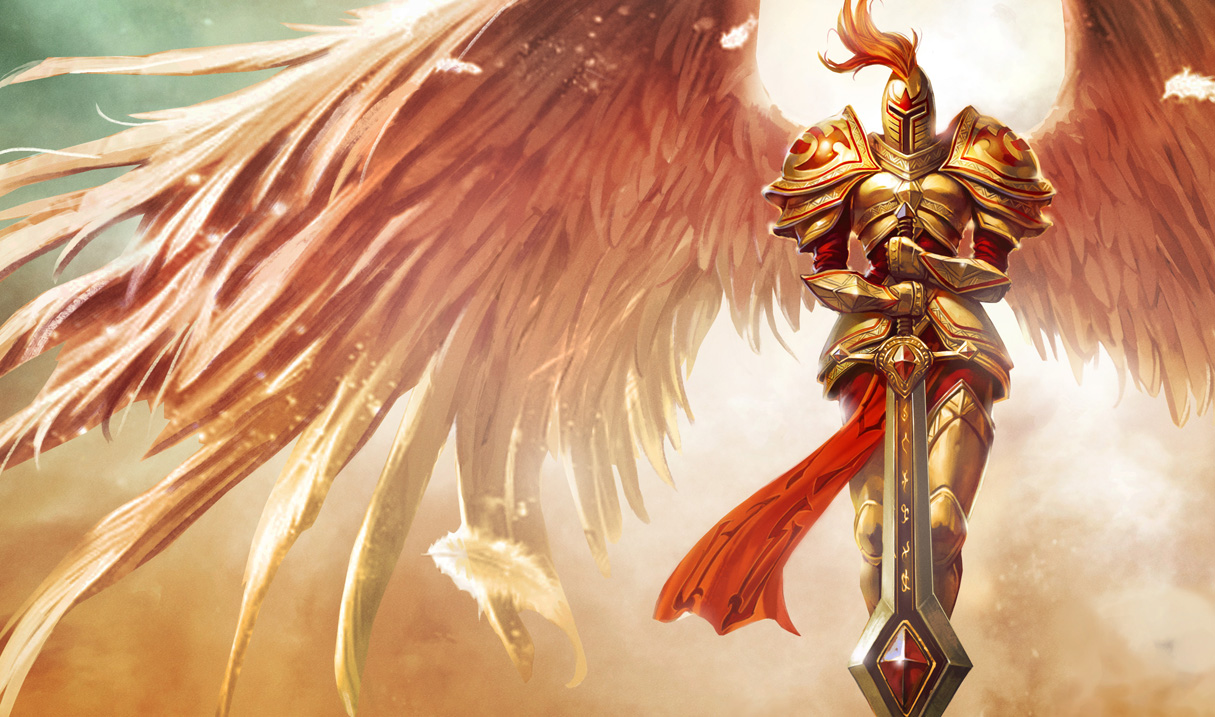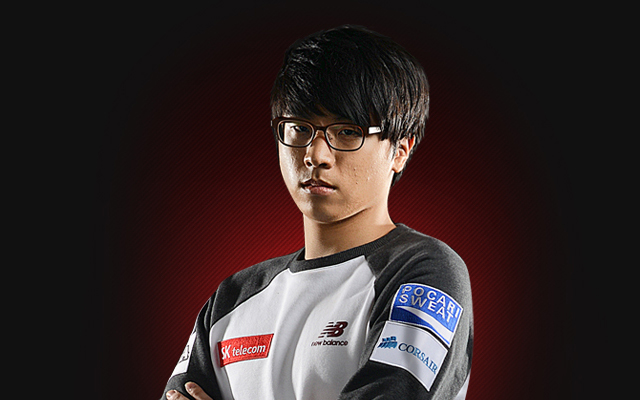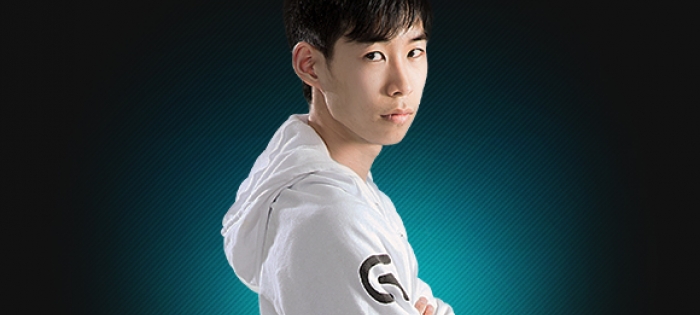League of Legends: Hanging the Sword of Damocles

By now, the damage done to the legendary Korean esports infrastructure is self-evident. Though the epic five-game set between SKT and CJ Entus this week was suitably entertaining, with Faker remaining undefeated when allowed to pilot LeBlanc, even casual observers had to admit that it's lacked a certain sharpness that's graced the OnGameNet Champions playoffs of prior years.
The first two games were especially disappointing, with SKT's rookie jungler T0M and secondary mid laner Easyhoon visibly cracking under the pressure. And it certainly didn't help that CJ support player Madlife was playing up to his near-mythical reputation, devastating their ranks with aggressive over-the-wall Flash-Flays. For a while, it seemed as if CJ Entus ended up being the greatest beneficiaries of the Patch 5.5+ meta—up until now, neither team had suffered a single defeat post-Cinderhulk.
Then it turns out that Madlife wasn't the only veteran gaining a boost from the new metagame.
When was Bengi last this good? During the preseason, it seemed as if his Lee Sin was beautifully on-point—but then again, the preseason made Samsung's new all-rookie team seemed like they'd actually be a threat. When actual consequences were on the line, their roster wilted, and so seemingly did Bengi's career as a respected jungler. Yet when he and Faker were rotated back to the roster versus CJ Entus, it was lights out for the enemy team.
And this, I think, is why Korea's still to be feared, as we get closer to the Mid-Season Invitational. They've lost a lot of luster after China's madcap shopping spree, as whole rosters get replaced and entire coaching staffs had to be rebuild. Even their secret weapon was partially dismantled as the one-team-per-organization rule tore apart the prior sister-teams system that guaranteed a baseline quality to their scrims. But only partially dismantled. And after IEM Katowice shook them up, and another round of international prestige is up for grabs, the remnants of the Great Korean Engine of 2013 and 2014 is spluttering awake again to remind us lesser mortals why it terrified us for so long—and why even its cannibalized remains are worthy of respect.
By a thread

Do you recall how they came to that place? As we all lamented for Bengi's disgrace? The collapse of a world championship legacy is a painful and merciless one, and as SKT T1 K was torn apart piece by piece, player by player, only two things were known for sure: that Faker was going to be the very last to leave, and Bengi shouldn't stay. Where Piglet still had flashes of brilliance and Impact was a solid if unexciting role player, the former world champion jungler was struggling for relevance.
Sure, yes, 2014 was Kakao, Spirit and DanDy's crown jewel season. The trio of junglers represented a platinum-grade talent pool as yet unmatched by any region (even now, when all three are work-vacationing in China), so it was maybe a little excusable for Bengi to get overshadowed for most of Season 4 But that excuse swiftly died as his spring performance continued to suffer. There was nobody left that should be casting a shadow over him, yet it might have been kinder if there were—if nothing else, to keep the camera off his failures as SKT struggled for anything resembling control over the Rift.
The biggest gaming news, reviews and hardware deals
Keep up to date with the most important stories and the best deals, as picked by the PC Gamer team.
It was a breathe of relief for SKT fans when newbie T0M was pulled out from seemingly nowhere to terrorize people with Udyr. Sure, the kid was young, untried, and inexperienced—but he was aggressive to Bengi's passive, thrill-seeking to Bengi's pathological risk aversion, and seemed to do well early on. If he had just a little more mental fortitude, just enough gumption to stay on top of his game versus a similarly revitalized CJ Entus, maybe this would've been Bengi's last professional season.
Instead, the newbie wilted, and the old hand was drawn in. And Bengi fought like a blood-crazed shark.
T0M's entry into SKT was the threat, I posit. The Sword of Damocles, hanging by a single horsehair thread over Bengi's proverbial head. The proof that he was expendable—proof that an old trophy from two years ago meant nothing if he was going to hold his team back.
So Bengi got better. He had to. And Jin Air's Cpt Jack got better after a two year slump, as Pilot was breathing down his neck. And even Madlife and Space, the great despair of 2014, got significantly better, as even they were saddled with understudies eager for their jobs.
Maybe it's time the west also took their substitutes seriously.
Seconds in the corner

It's usually accepted that North America and Europe are particularly inept at developing talent, though that hardly needs to be true. Yes, China's LSPL mocks everybody else's attempts—there are teams and players in there that could easily be considered world-caliber contenders (or were last year, thanks to the Korean buy-out being so thorough that they ran out of LPL slots to put everybody). North America, in particular, seems just a step away from having a formalized system: "academy" teams in the Challenger Series have demonstrated that there is at least that minimum fiscal means among the top organizations to fund a secondary team.
The problem is, as the Challenger Series is currently conducted, the only thing they're looking to do is sell off their excess team at the end of the split. And to me, that seems wasteful—like a farmer selling or eating their seed stock.
There is currently no system in place to maintain individual talents, like there is in conventional sports. While a pro tennis player can expect their professional careers and physical conditions to peak at the comparatively ripe old age of 30, esports professionals are lucky not to burn out before their early 20s. Theoretically, this is exactly what you use a substitute for—sure, it's not as if a pro gamer puts even a faint shadow as much strain on their tendons as Tim Lincecum does with every pitch, but I'd bet that Cloud 9 wished that Hai's wrists were healthier and had more time to rest. Damage over time can be even deadlier than burst damage, after all.
But an ideal substitutes system doesn't just give players somebody they can foist duties off to on unimportant games or matchups. It's also an implied threat. Currently, it is believed that roster stability is the most important thing for a team—and there's some truth to that, as shotcalling and team synergy is an overwhelmingly important part of League strategy. But stability isn't purely positive, as it also breeds complacency. If a player thinks they've got the starting position anyhow, and have burned out or otherwise lost interest in the game, they become a major liability to the team's overall performance.
If they'd rather just play Hearthstone all day, that's really unfair to their teammates. So how best to prevent that sort of complacent attitude? Well, for one, by instilling doubt whether they get to keep their jobs.
Imagine this: a North American LCS organization starts up a Challenger Series team, recruiting solo queue's best. They then sign all five up as their LCS substitutes—a situation currently allowed and even implicitly encouraged by the rulesets governing each circuit level. Unlike in the status quo for most academy teams, the Challenger and LCS teams are each other's regular scrim partners as well—less beneficial for the LCS team than training with their top-level peers, maybe, but extremely helpful for turbocharging the Challengers' development by breaking down the decision-making process and practices of the more senior team for them to emulate.
Then, this is the important part: the LCS players are also the substitutes for the Challenger Series team.
You now have an internally developed Sword of Damocles, control of which lies with the team's coach. Players on both sides are spurred to draw out their utmost performance from week to week in hopes of qualifying for the LCS seat—and players that are suffering maladies or otherwise need a break can gearshift down to the Challenger Series' less demanding level of play. You also solve the enforcement problem esports coaches currently have with headstrong players by giving them tangible means of dictating authority.
You are left, in other words, with an authentic and fully realized professional gaming organization, with infrastructure in place for both talent farming and professional advancement. One with the staff and methodology in place to finally crank out winners. Congratulations, North America—you've finally made it.
Or, at the least, you'd make it if you stopped making teams like TSM Darkness and CLG Black. What a dismal waste of time.

